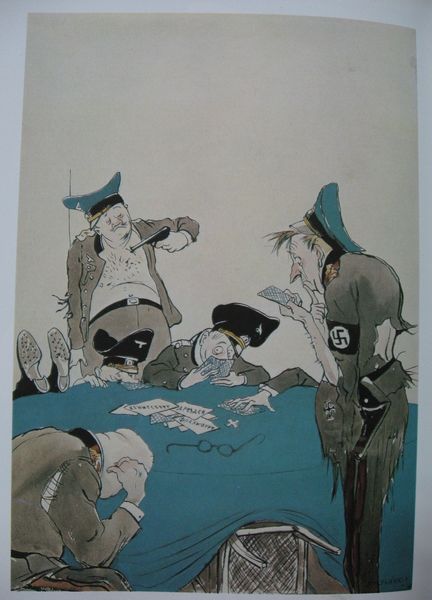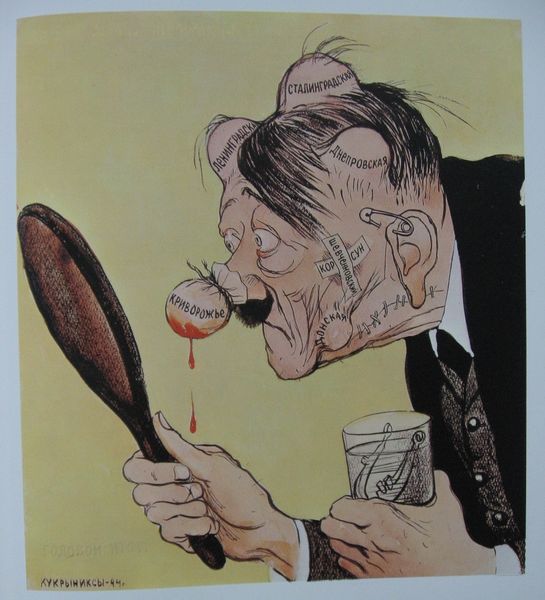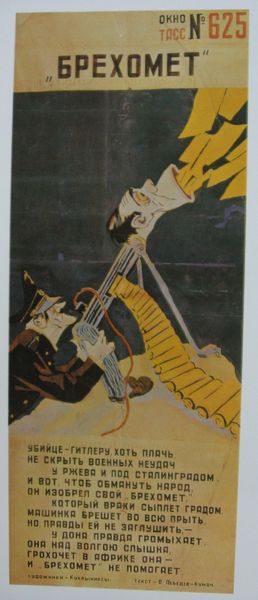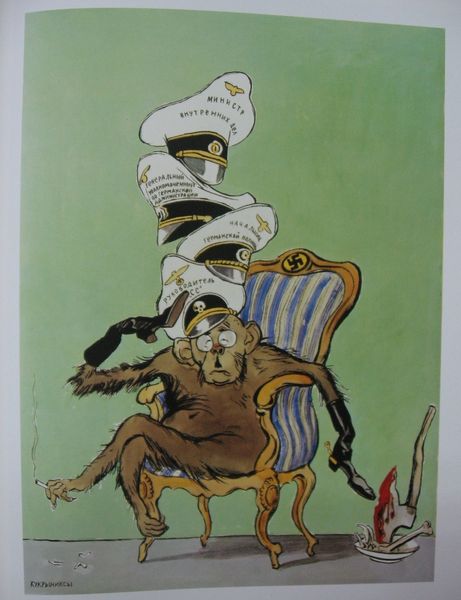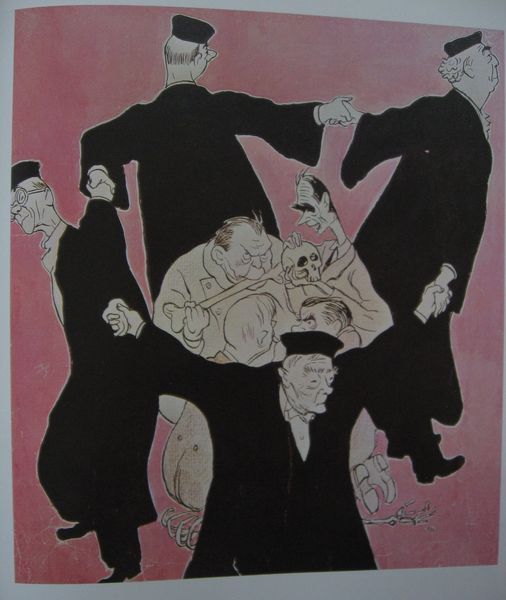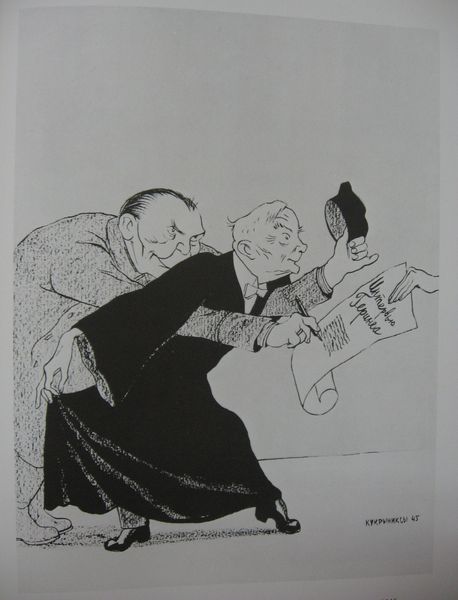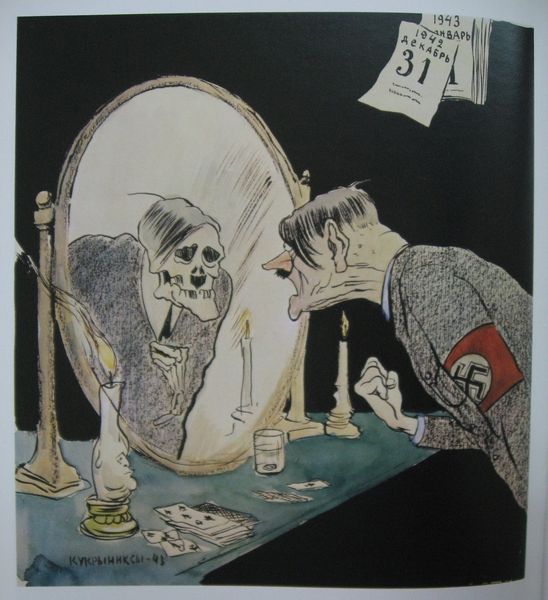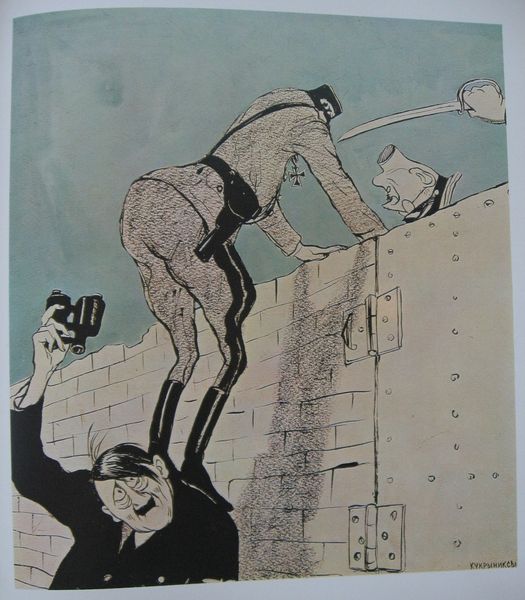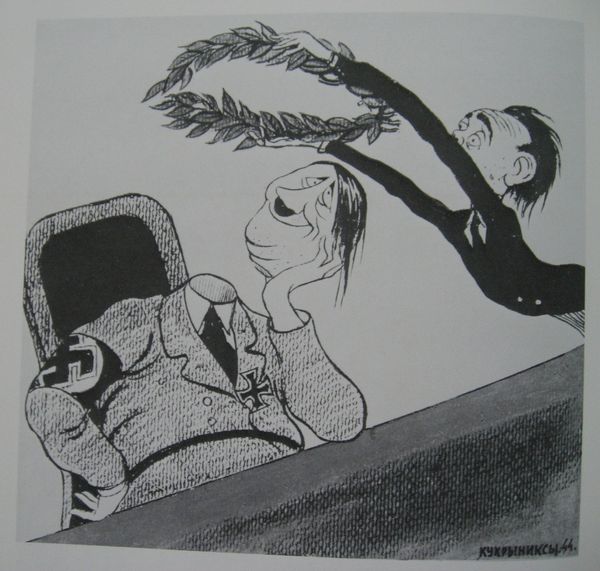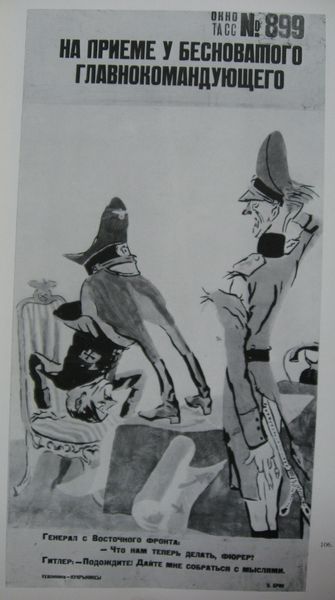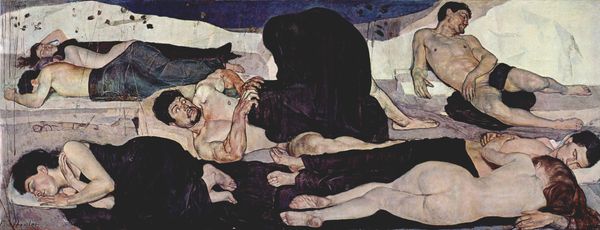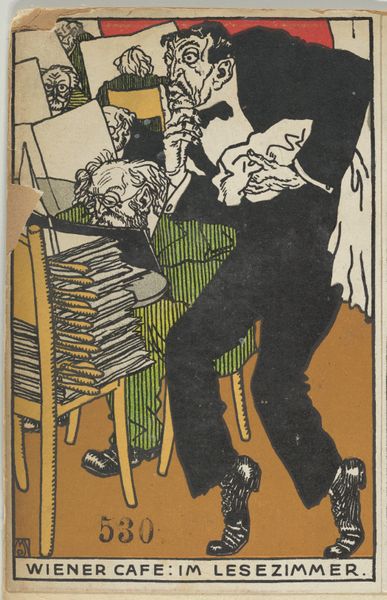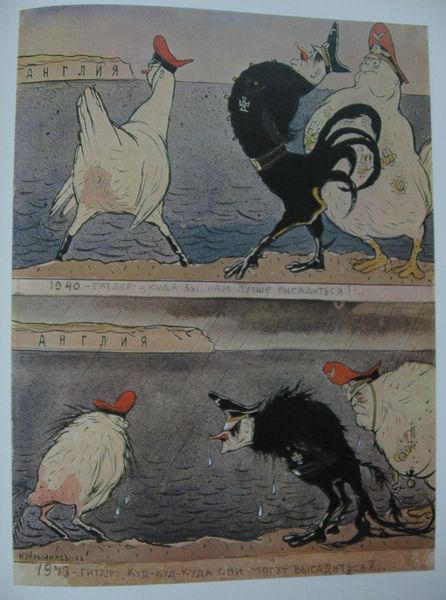
watercolor
#
portrait
#
narrative-art
#
caricature
#
caricature
#
figuration
#
watercolor
#
surrealism
#
portrait drawing
#
watercolour illustration
#
surrealism
Copyright: Kukryniksy,Fair Use
Curator: Here we have an untitled watercolor work by the collective Kukryniksy. The caricature offers a sharp, almost surreal commentary. What’s your immediate reaction to it? Editor: Disquieting. The skewed proportions, the sickly palette... it creates an atmosphere of unease, amplified by the presence of a rather grotesque figure who seems to be seeking guidance from a dark, supernatural power. There’s an undeniable sense of dread. Curator: The work uses strong, deliberate lines and a restricted colour palette dominated by blues, browns, and blacks to highlight the grotesque nature of the characters. Observe how the artists have employed techniques reminiscent of early 20th-century Expressionism, particularly in their manipulation of form and composition. Editor: Precisely! This isn’t just an isolated image, but a scathing political statement. The artists, active during the Soviet era, used their art as a weapon against fascism. This scene can be read as a condemnation of tyranny. Note the black cat, a common symbol of bad luck or magic and the dark crow. Curator: Indeed, by utilizing recognizable caricature of Hitler, combined with such clear symbols, they transform portraiture into narrative, imbued with explicit moral judgement. The deliberate exaggeration serves to both mock and demonize the sitter. Editor: And that is because figures such as Hitler do not exist in a vacuum. Their actions and rise to power were a product of specific socio-economic conditions and belief systems. The fortune teller character represents the seductive and misleading ideologies of the era. The piece invites critical reflection on propaganda and power structures, doesn’t it? Curator: The work showcases how the formal elements contribute to constructing meaning and understanding of historical subjects. It invites viewers to analyze the subject through the aesthetic choices employed. Editor: And for us, this piece demands active engagement—challenging viewers to confront not just the past but also contemporary parallels of those narratives of power and deception. Curator: I find myself reflecting on how it offers us to contemplate art's capacity to document and critique historical subjects through deliberate aesthetic presentation. Editor: Absolutely, it reminds us how art can serve as both a mirror reflecting societal ills and a tool for instigating crucial dialogue about accountability and action.
Comments
No comments
Be the first to comment and join the conversation on the ultimate creative platform.
